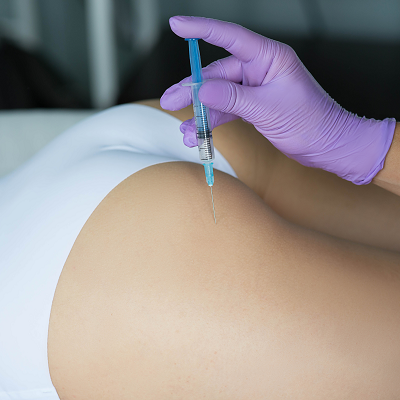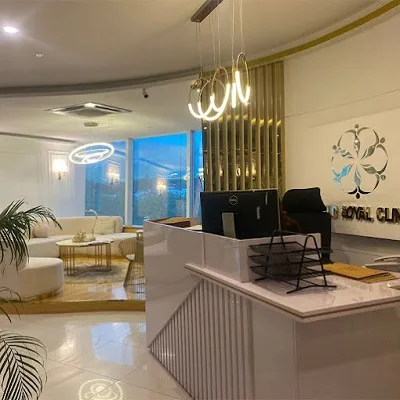
Before delving into the specifics, one should consider the reasons behind the great importance of safety in cosmetic operations. Moreover, the volume of people undergoing cosmetic surgery has skyrocketed. Although they are still medical in character, many of these treatments are not invasive. Further, getting the most extraordinary outcomes and avoiding long-lasting issues or harm depend on the patient’s safety-first priority. Therefore, we will discuss How to Ensure Patient Safety During Aesthetic Treatments in this post.
How to Ensure Patient Safety During Aesthetic Treatments?
The following points are crucial to Ensure Patient Safety During Aesthetic Treatments.
Conducting a Comprehensive Medical Assessment
One of the first things done to ensure the patient is safe is a full medical exam. This stage cannot be skipped as it clarifies if the patient would be a suitable fit for the treatment.
- Review of Medical History: Before beginning any treatment, the doctor or nurse should check over the patient’s medical history. This covers any allergies, medications you now use, prior treatments you underwent, and diseases you already have.
- Lifestyle Consideration: Your treatment’s effectiveness can be influenced by your eating, drinking, and smoking, as well as by other factors. The practitioner should completely grasp the way the patient leads their life.
Clear and Informed Consent
It’s the law and the moral thing to do. Therefore, clinics must take the consent of the patients in writing. Aestheticians and clinics should openly tell all the related things in the procedure, including all possible hazards and expectations.
- Detailed Explanation: The doctor must explain the procedure in great detail, including any adverse effects that could occur and the actions to be taken.
- Written and Verbal Consent: Patients should be provided written and verbal replies so they may ask questions and express any issues.
Always be ready to respond to questions the patient asks. Giving consent hurriedly could lead to trouble and grief.
Using High-Quality Products and Equipment
Regarding the safety of cosmetic treatments, the quality of the instruments and products estheticians apply is quite crucial.
- Written and Verbal Consent: Use products approved by government organizations such as the FDA only. This covers face fillers and lasers.
- Sterile Equipment: Clean all of your tools and equipment to reduce your chance of acquiring a disease.
Practitioner Expertise and Certification
Selecting a qualified practitioner is among the most crucial things you can do to keep your patients safe. It’s unfortunate that many pick less skilled, less expensive professionals and find poor outcomes.
- Board-Certified Practitioners: Only choose a plastic surgeon or doctor who is board-certified. These professionals have the necessary expertise and training to execute safe cosmetic treatments.
- Continuous Education: One continuously evolving field of study is beauty. Professionals should remain current with the newest techniques and safety guidelines.
Proper Pre- and Post-Treatment Care
Patient safety continues even after the course of treatment. Getting the correct care both before and after treatment can help you to maximise benefits and minimise danger.
- Pre-Treatment Guidelines: Clear instructions on how to prepare for their therapy should be given to patients before it starts. This might entail avoiding some medications or cosmetic products.
- Post-Treatment Guidelines: Care orders should be written down and discussed over the phone following therapy. Individuals should know when to visit a doctor and what to do should they develop bruising, swelling, or other adverse effects.
Emergency Preparedness and Protocols
Issues might arise even if all one follows the safety precautions. Thus, centers must have preparation for any form of emergency.
- On-Site Emergency Kits: Clinics should have a properly stocked emergency kit including items like epinephrine for allergic reactions since emergency kits are on-site.
- Trained Staff: Everyone who works there should be trained in handling a medical emergency—that is, whether it be an allergic response or a horrible side effect from a medication.
Patient Education and Follow-Up
Furthermore, explaining to the patient what to expect might significantly affect their attitude on the whole matter.
- Realistic Expectations: Having reasonable expectations depends much on being honest about the limitations of the treatment. If one has high expectations, you will not be satisfied with a process even if it operates technically right.
- Follow-up Appointments: Plan follow-up sessions to discuss any concerns and monitor patient development.
Some procedures, like fillers, for example, can require touch-ups or modification. What a follow-up visit is for is ensuring that everything is mending correctly.
Final Verdict
It is crucial to ensure patients are safe during beauty treatments. Hence, to do so is a complete medical examination utilizing premium products and emergency plans. Individuals as well as physicians have to accomplish this. These actions will help us to ensure that these cosmetic operations are not only effective but also safe.
To get safe and secure aesthetic Treatment, book your appointment at Royal Cosmetic Surgery-PK. We prioritize patient safety and effective, long-lasting results.






